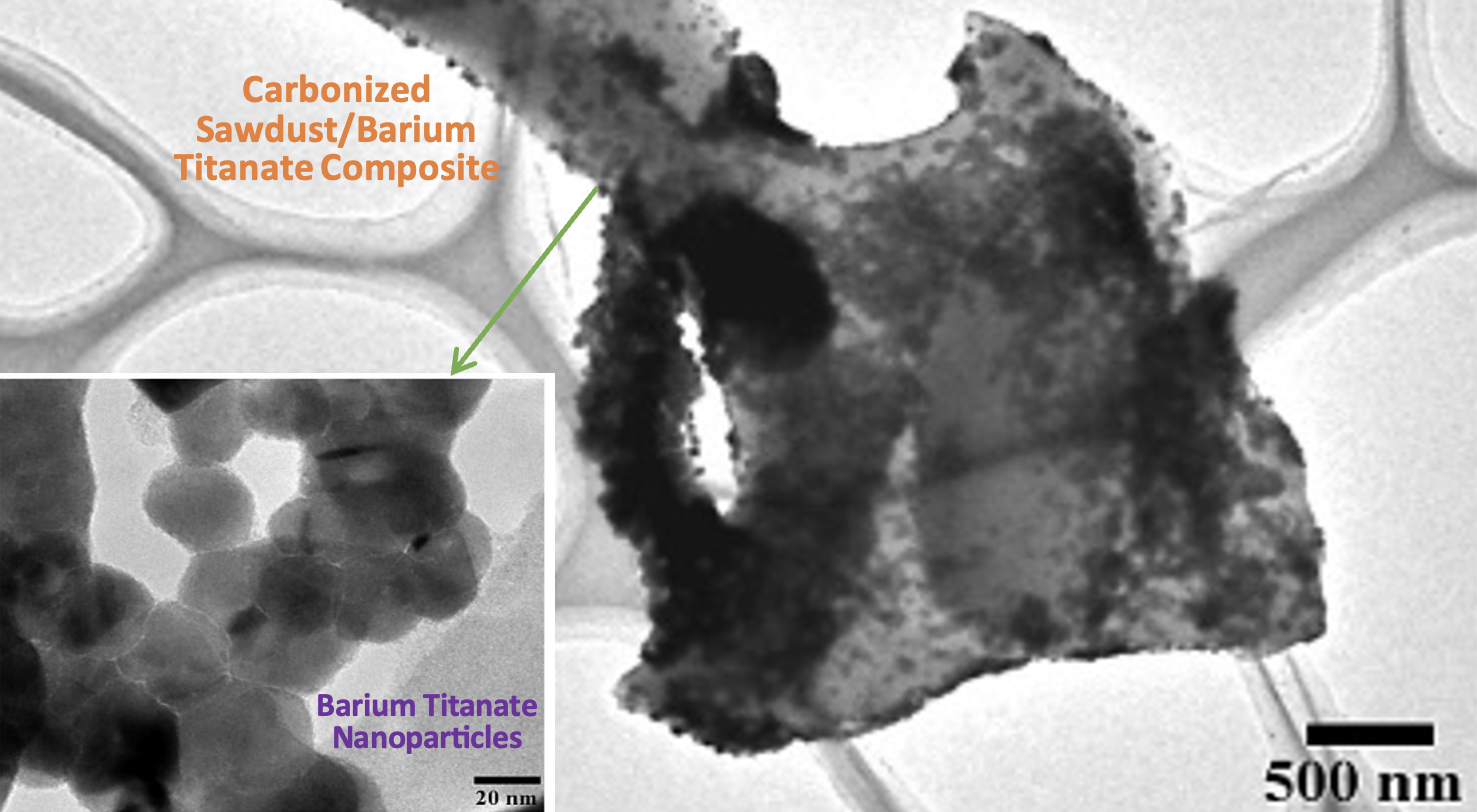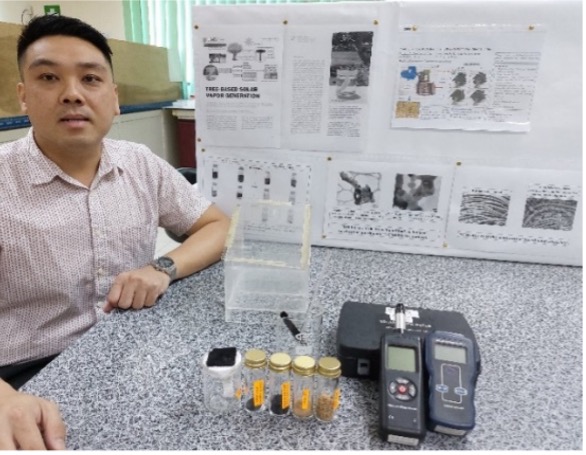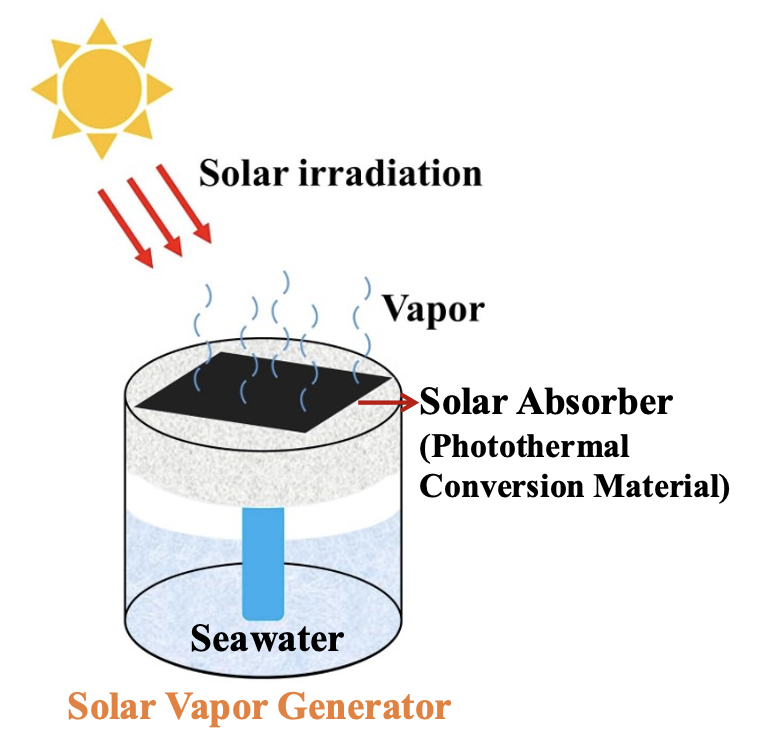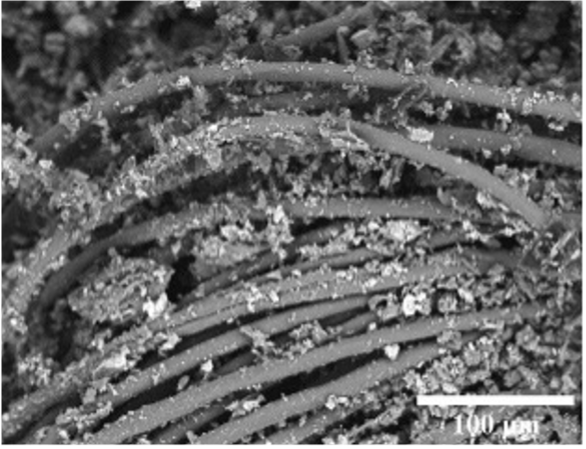Carbonized Sawdust/Barium Titanate as Photothermal Conversion Material for Solar Vapor Generation

Published: 08 May 2024
Led by Assoc. Prof. Ir. Ts. Dr. Melvin Gan Jet Hong.
Researchers from the Faculty of Engineering at Universiti Malaysia Sabah (UMS) fabricated carbonized sawdust/barium titanate composite using a sol-gel method, which was later incorporated into cotton substrate by using a dip-coating process to produce a solar absorber. The composite solar absorber was tested under direct solar radiation by using seawater collected from the beach coast of UMS, for the purpose of solar vapor generation and simultaneously the seawater desalination.

Assoc. Prof. Ir. Ts. Dr. Melvin Gan Jet Hong with the lab-scale solar vapor generator

Setup of solar vapor generator

Solar Absorber (composite incorporated into cotton substrate)
Harvesting solar energy for water vapor generation using photothermal conversion materials has received attention by researchers. Diverse materials have been developed to advance photothermal conversion efficiency, such as plasmonic nanoparticles, semiconductors, various carbon materials, and ceramics.
Low-cost, abundant, and sustainable waste-derived carbon materials have gained a wide interest comparable to the great cost and high quality carbon materials, since possess great chemical composition, morphology and functionality. High carbon content and porous structure of carbon materials can be obtained from agricultural waste such as sawdust.
Ceramic materials made their way as a potential photothermal conversion material for solar driven vapor generation since the fabrication process is inexpensive and practical, along with good light absorption ability. It is interesting to note that barium titanate is thermally and chemically stable and possesses diverse practical properties including optical properties.
The combination of carbonized sawdust and barium titanate nanoparticles combined the properties of both components to form composite materials for use as a promising solar absorber material in solar vapor generation. The UMS researchers found that the composite materials exhibited photothermal conversion efficiency ≈ 72% and that the salinity (≈ 50 ppm) and pH (≈ 7.4) value of the collected clean water generated from seawater was within the safe water limit based on the World Health Organization (WHO) standard. Moreover, our solar absorber is aligned with the Sustainable Development Goals (SDGs) 6 and 13 where this technology offers an alternative method for clean water generation by utilizing renewable solar energy, which is beneficial to society without causing any harm to both nature and humans.
Further reading:
https://doi.org/10.1016/j.ceramint.2021.12.198
https://doi.org/10.1007/s12649-023-02067-x
Barium titanate nanoparticles attached onto the surface of carbonized sawdust to form composite materials
"Low-cost, high reproducibility, and environmentally friendly carbon materials derived from waste materials for solar absorber materials will fundamentally support the green and sustainable engineering."
- Assoc. Prof. Ir. Ts. Dr. Melvin Gan Jet Hong



